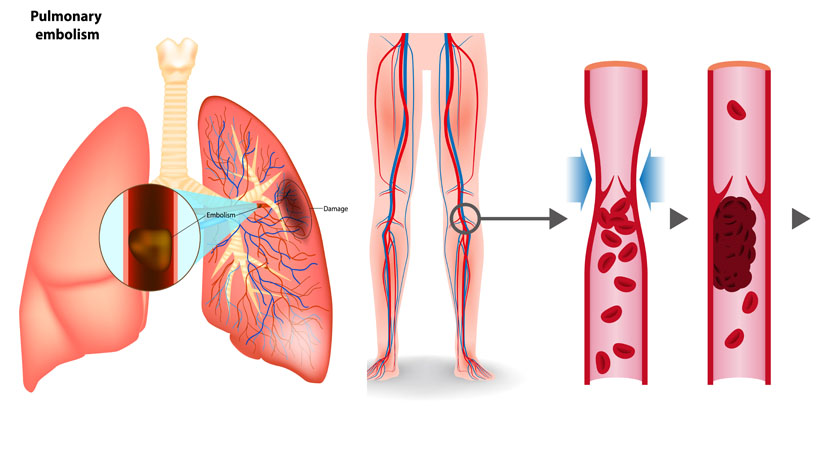When you bleed, your blood clots (or hardens and dries) in order seal your wound and prevent excess bleeding. After the job is done, the clot falls apart … or not. The results of the clot vary greatly depending on the location of the body where it forms, but in severe cases can lead to a heart attack or stroke. Here are the warning signs of a potentially dangerous clot.
Your limbs
Clots can form in the arms and legs and may result in deep vein thrombosis (DVT), which occurs when clots travel to the heart or lungs. Clots in the limbs are most likely to form after a long period of immobility (i.e. after an injury).
Watch out for:
- Swelling
- Change in color (red/purple skin)
- Pain
- Trouble breathing
Your heart
A blood clot in or around your heart can lead to a heart attack.
Watch out for:
- Intense chest pains
- Strained breathing
- Sweating
Your lungs
A pulmonary embolism occurs when a clot starts out in the deep vein of your arm or leg, and then breaks off and reaches the lungs. This can lead to serious lung damage and affect oxygen levels in your blood.
Watch out for:
- Chest pain
- Feeling out of breath
- Lightheadedness
- Cough (which may include blood)
- Blue lips or nails
Your brain
This can happen after a concussion, or as a result of a clot forming in another part of your body. A blood clot can enter your bloodstream and end up traveling to the brain, which may result in a stroke.
Watch out for:
- Difficulty seeing and speaking
- General fatigue/weakness
- A seizure
Sources:
https://www.webmd.com/dvt/blood-clot-symptoms#1
https://www.mayoclinic.org/diseases-conditions/deep-vein-thrombosis/symptoms-causes/syc-20352557
https://www.mayoclinic.org/diseases-conditions/pulmonary-embolism/symptoms-causes/syc-20354647



